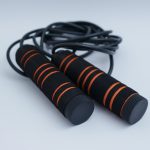What is cardio? Cardio refers to the term cardiovascular which is heart, blood and blood vessels but wait a minute, what about the lungs? Yes, the lungs are definitely needed when you run or bike, etc. When we engage in these types of exercises, we are actually using 2 systems of the body, cardiovascular (cardio) and respiratory (lungs and air passages) systems. We engage in our cardiovascular and respiratory exercise to develop Cardiorespiratory endurance. Cardiorespiratory endurance requires fitness of your heart, lungs, blood, blood vessels, and muscles.
Some benefits of being Cardiorespiratory FIT:
Lungs
- Lungs work more efficiently
- Deliver more oxygen to blood
- Healthy lungs allow deeper and less frequent breathing
Heart/Nerves of the heart
- Heart muscle gets stronger
- Pumps more blood with each beat (stroke volume)
- Beats slower
- Gets more rest
- Works more efficiently
- Helps the nerves slow your heart rate at rest
- Builds muscles and helps them work more efficiently
Arteries/veins
- Healthy elastic arteries allow more blood flow
- Less risk of atherosclerosis
- Lower blood pressure
- Less risk of a blood clot leading to heart attack
- Development of extra blood vessels
- Healthy veins with healthy valves
Blood/Muscle cells
- Less bad cholesterol (LDL) and other fats in the blood
- More good cholesterol (HDL) in the blood
- Reduces inflammatory markers in the blood
- Fewer substances in the blood that cause clots
- Use oxygen efficiently
- Get rid of more wastes
- Use blood sugars and insulin more effectively to produce energy
Some examples of Cardiorespiratory fitness include the following and are what you would think:




Of course, using any “Cardio” equipment in the gym will help get you Cardiorespiratory FIT. Beginners, start with 10-15 minutes daily, working up to 30 minutes sustained. From there 30-45 minutes here and there with an occasional longer or shorter cardio session. A base plan is 30 minutes daily.
Happy moving!
Thanks for reading!
Coach Tanya



